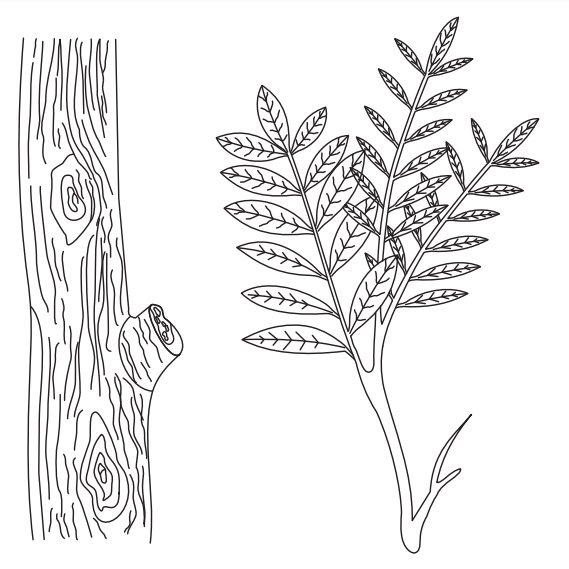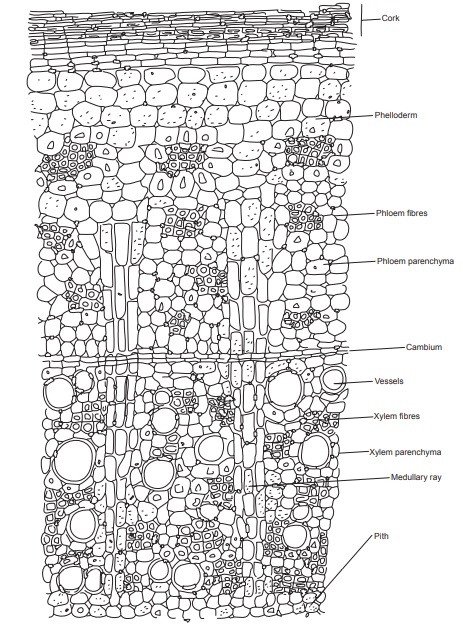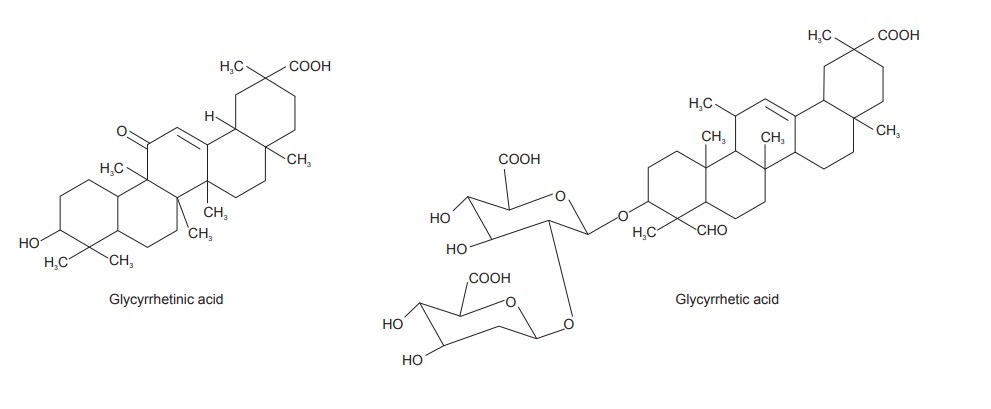Liquorice
| Home | | Pharmacognosy |Chapter: Pharmacognosy and Phytochemistry : Drugs Containing Glycosides
Liquorice consists of subterranean peeled and unpeeled stolons, roots and subterranean stems of Glycyrrhiza glabra Linn, and other species of Glycytrhiza, belonging to family Leguminosae.
LIQUORICE
Synonyms
Radix Glycyrrhizae, Sweet liquorice.
Biological Source
Liquorice consists of subterranean peeled and unpeeled
stolons, roots and subterranean stems of Glycyrrhiza
glabra Linn, and other species of Glycytrhiza,
belonging to family Leguminosae.
Geographical Source
It is mainly found in China, Europe, India, Iraq, Japan,
Kurdistan, Spain, Turkey, and the United States.
Cultivation and Collection
Liquorice is often cultivated for its edible root which is
widely used in medicine and as flavouring. The plant requires a deep well
cultivated fertile moisture-retentive soil for good root production. Prefers a
sandy soil with abundant moisture and does not flourish in clay. Slightly
alkaline conditions produce the best plants. The plant thrives in a maritime
climate. It is propagated using seeds and roots. The seeds are presoaked for 24
h in warm water and then sown in spring or autumn in a greenhouse. The
seedlings are individually potted when they are large enough to handle, and
grown them for their first winter in a green house. They are transplanted in
late spring or early summer when in active growth. Plants are rather slow to
grow from seed. The plant parts are procured from old plantations, being waste
from the harvesting process, consisting of those side roots or runners which
have eyes or buds, cut into sections about 6 inches long. They are dibbled in
rows 3 or 4 feet apart, about 4 inches underneath the surface and about 18
inches apart in the rows. In the autumn, the ground is dressed with farmyard
manure, about 40 tons to the acre. Plants are slow to settle in and do not
produce much growth in their first two years after being moved. The young
growth is also very susceptible to damage by slugs and so the plant will
require some protection for its first few years. This species has a symbiotic
relationship with certain soil bacteria; these bacteria form nodules on the
roots and fix atmospheric nitrogen. Some of this nitrogen is utilized by the
growing plant but some can also be used by other plants growing nearby.
Harvesting generally occurs in the autumn of the fourth
year. The soil is carefully removed from the space between the rows to a depth
of 2 or 3 feet as required, thus exposing the roots and rhizomes at the side,
the whole being then removed bodily. The earth from the next space is then
removed and thrown into the trench thus formed and these operations are
repeated continuously. Every portion of the subterranean part of the plant is
carefully saved; the drug consists of both runners and roots, the former constituting
the major part. The roots are properly washed, trimmed and sorted, and either
sold in their entire state or cut into shorter lengths and dried, in the latter
case the cortical layer being sometimes removed by scraping. The older or
‘hard’ runners are sorted out and sold separately; the young, called ‘soft,’
are reserved for propagation.
Characteristics
Liquorice root is in long, straight, nearly cylindrical,
unpeeled pieces, several feet in length, varying in thickness from 1/4 inch to
about 1 inch, longitudinally wrinkled, externally greyish brown to dark brown,
warty; internally tawny yellow; pliable, tough; texture coarsely fibrous; bark
rather thick; wood porous, but dense, in narrow wedges; taste sweet, very
slightly acrid. The underground stem which is often present has a similar
appearance, but contains thin pith. When peeled, the pieces of root (including
runners) are shorter, a pale yellow, slightly fibrous externally, and exhibit
no trace of the small dark buds seen on the unpeeled runners here and there.
Otherwise it resembles the unpeeled.

Microscopy
Cork consists of several rows of radially arranged thin
walled tubular cells. Phelloderm is composed of parenchymatous and sometimes
collenchymatous cells. Starch grains and calcium oxalate crystals are seen in
phelloderm. Pericyclic fibres are found in groups. Phloem consists of sieve
tissue alternating with thick walled, lignified fibres surrounded by a sheath
of parenchymatous cells containing prisms of calcium oxalate. Xylem vessels and
xylem parenchyma are present. Medullary rays are radially elongated. Pith is
present in rhizomes and absent in root.

Chemical Constituents
The chief constituent of liquorice root is Glycyrrhizin
(6–8%), obtainable in the form of a sweet, which is 50 times sweeter than
sucrose, white crystalline powder, con-sisting of the calcium and potassium
salts of glycynhizic acid. Glycyrrhizic acid on hydrolysis yields glycyrrhetic
or glycyrrhetinic acid.
Glycyrrhizinic acid is a triterpenoid saponin having α-amyrine structure. It shows especially in alkaline
solu-tion frothing but it has very weak haemolytic property. The yellow colour
of the drug is due to chalcone glycoside isoliquiritin. The drug also contains
sugar, starch (29%), gum, protein, fat (0.8%), resin, asparagin (2–4%), a trace
of tannin in the outer bark of the root, yellow colouring matter, and 0.03% of
volatile oil.

Chemical Test
When 80% sulphuric acid is added to a section or powder of
the drug orange yellow colour is produced due to transformation of flavone
glycoside liquiritin to chalcone glycoside isoliquiritin.
Uses
Glycyrrhiza is widely used as a sweetening agent and in
bronchial problems such as catarrah, bronchitis, cold, flu and coughs. It
reduces irritation of the throat and yet has an expectorant action. It produces
its demulcent and expectorant effects. It is used in relieving stress. It is a
potent healing agent for tuberculosis, where its effects have been compared to
hydrocortisone. Glycyrrhiza is also effective in helping to reduce fevers
(glycyrretinic acid has an effect like aspirin), and it may have an
antibacterial action as well. It is used in the treatment of chronic inflammations
such as arthritis and rheumatic diseases, chronic skin conditions, and
autoimmune diseases in general. It should be used in moderation and should not
be prescribed for pregnant women or people with high blood pressure, kidney
disease or taking digoxin-based medication. Prolonged usage raises the blood
pressure and causes water retention. Externally, the root is used in the
treatment of herpes, eczema and shingles.
Marketed Products
It is one of the ingredients of the preparations known as
Herbolex, Koflet, Regurin (Himalaya Drug Company), Jeevani malt (Chirayu
Pharma), Eladi Bati, Madhume-hari (Baidyanath), J.P. Nikhar oil, J.P. Kasantak
(Jamuna Pharma), Respinova (Lupin Herbal Laboratory) and Yasti madhu (Zandu
Pharmaceuticals Works Ltd.).
